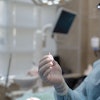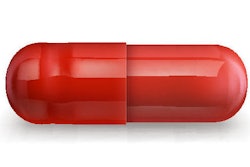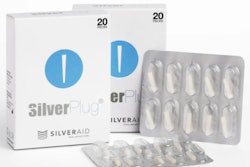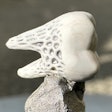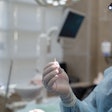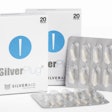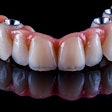
Implant designs and innovations have continually advanced since the first implants were introduced. Be it titanium or zirconia, the surface textures of the implants, the "platform switch" abutments, narrowed abutment diameters, and/or conical implant connections, all have been engineered to appeal to the surrounding bone and soft tissues.
During this maturing process of the implant market, increased research and clinical education has removed many variables associated with implant placement. The ultimate goal of implants has been to mimic how a natural tooth functions and to become a welcomed inhabitant of the native surroundings.
During this evolution of designs, innovations, and clinical experience, new variables to success were discovered. Micromovement of implant components during mastication has brought to light two aspects: First, an abutment may loosen and need tightening. Second, biofilm/bacteria ingress and egress from the implant abutment junction plays a negative role regarding surrounding tissues. Peri-implant mucositis (which is reversible but if left unchecked can become nonreversible peri-implantitis) can progress as a result of the egress of bacteria from the implant.
This lesser-discussed issue of micromovement leading to microleakage is increasingly appearing in the literature and in lectures.* Leakage into and from the implant abutment joint is recognized to be a strong influence in the overall health of hard and soft tissues around the implant.
While implant designs have claimed to minimize or prevent leakage into and from implants, they do not.* As the patient functions on the implant, the implant abutment junction continues to flex and wear, pumping saliva, nutrients and oral flora into the implant chamber from the peri-implant area.*
The effort to seal the internal chamber of the screw channel and its contents has become a serious subject in Europe and now in the U.S. When bacteria are allowed inside the abutment and then into the delicate zone where bone, connective tissue, implant and abutment all merge, new considerations should be addressed (see Figure 1 below). What covers the implant access screw now becomes a real subject for the health and future of the surrounding tissues.
 Figure 1: This figure illustrates the combined issues inherent with the typical screw channel of dental implants. Images courtesy of Larry Clark.
Figure 1: This figure illustrates the combined issues inherent with the typical screw channel of dental implants. Images courtesy of Larry Clark.
Although cotton was never intended for use under definitive restorations, cotton is currently used in a large percentage of practices and dental schools. Teflon tape (PTFE), although banned in Europe, is used substantially in the U.S. Cavalcanti et al confirmed that the number of infiltrating microorganisms when PTFE was used was equivalent to that for the groups with no sealing, independent of the implant system evaluated.*
In Europe, Australia, and Latin America, alternatives for cotton and teflon have been sought to prevent the effects of bacterial egress from implants. One such device, SilverPlug, has been clinically utilized for more than 10 years around the world and is now available in the U.S.
Utilizing nonleaching nanosilver technology in a conical form, SilverPlug is designed to fit any implant and prevent the internal growth and proliferation of anaerobic bacteria. SilverPlug is certified and carries class IIa approval from the European Union Medical Device Regulation and is U.S. Food and Drug Administration compliant. Clinical experience is the proof of efficacy. Reports from clinicians include tremendous reduction in mucositis, crestal bone loss, and a total lack of odor when reentry is needed for adjustments (see Figure 2).
 Figure 2: A side-by-side comparison of two dental implant sites without SilverPlug (left) and with SilverPlug (right).
Figure 2: A side-by-side comparison of two dental implant sites without SilverPlug (left) and with SilverPlug (right).
The road to success is paved with many variables. Advancements and innovations of implant designs and surfaces has been significant. The road to success has also revealed bacterial variables that can and do affect the most desired tissue responses. Both characteristics are important.
* Author's note: Studies are available upon request.
Larry Clark has served the dental profession since 1971 in various capacities, including as an expanded duty dental assistant in the U.S. Air Force (USAF) general dentistry residency program, an education facilitator in the USAF general dentistry residency program, retail dental sales management, a product development manager, and director of clinical affairs and marketing. He currently serves as the chief ambassador at SilverPlug USA with Ambassador Marketing Resources LLC.
The comments and observations expressed herein do not necessarily reflect the opinions of DrBicuspid.com, nor should they be construed as an endorsement or admonishment of any particular idea, vendor, or organization.



